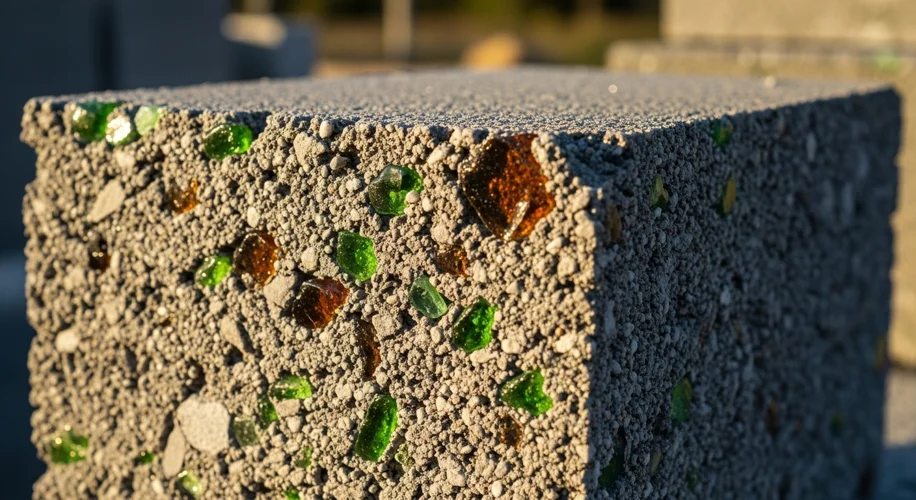It’s always exciting to see science find practical solutions for environmental challenges. Today, I want to talk about something I find particularly promising: researchers are developing a way to use discarded glass in construction blocks. This isn’t just about recycling; it’s a smart application of the circular economy that could significantly boost sustainability in the construction sector.
Think about all the glass we discard every day – bottles, windows, old electronics. Much of this ends up in landfills. However, when this waste glass is finely powdered, it can be integrated into building materials. Specifically, researchers have found ways to incorporate this powdered glass into concrete blocks. This process can reduce the need for traditional raw materials like cement, which has a substantial carbon footprint. Cement production is a major source of CO2 emissions globally, so finding ways to use less of it is crucial for climate action.
The science behind this is quite interesting. When glass is ground into a fine powder, it exhibits pozzolanic properties. This means it can react chemically with calcium hydroxide (a byproduct of cement hydration) in the presence of water. This reaction forms cementitious compounds that contribute to the strength and durability of the concrete. Essentially, the powdered glass acts as a supplementary cementitious material, or SCM, reducing the amount of Portland cement needed.
This innovation offers several benefits. Firstly, it diverts significant amounts of waste glass from landfills, tackling a waste management issue. Secondly, by reducing the demand for virgin materials and energy-intensive cement production, it lowers the overall environmental impact of building. The resulting blocks can be just as strong, if not stronger, than conventional ones, and potentially offer improved insulation properties as well.
Projects like this exemplify how scientific research can lead to tangible, sustainable solutions. They show us that materials we typically consider waste can be repurposed in valuable ways. It’s a step towards a more resource-efficient future, where the materials we use in our cities have a significantly lighter impact on the planet.
What can we do? As professionals, policymakers, and citizens, we can support research and development in these areas. Encouraging the adoption of these new materials in building codes and projects is vital. We can also advocate for better waste management and recycling infrastructure that supports the collection and processing of glass for such applications. Every effort to incorporate recycled content into our infrastructure moves us closer to a more sustainable built environment.

